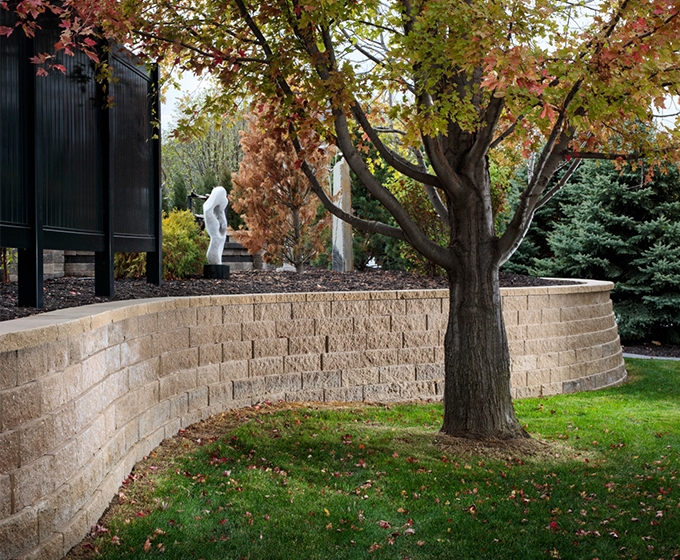Not known Details About Retaining Wall And Garden Wall Construction
Wiki Article
Retaining Wall And Garden Wall Construction for Dummies
Table of Contents7 Easy Facts About Retaining Wall And Garden Wall Construction ShownSome Known Incorrect Statements About Retaining Wall And Garden Wall Construction The Best Guide To Retaining Wall And Garden Wall ConstructionFacts About Retaining Wall And Garden Wall Construction Uncovered
If this gradient is not regulated, the wall will relocate or fail. Rain that runs the top of a retaining wall surface can damage the soil and also plants on either side, eroding them away. Water drainage systems divert this water from prone areas, reducing the effect to the framework and also its surroundings.It's been claimed half of all the troubles with keeping walls include drainage as well as water concerns, and keeping water out of these walls is a huge one. If it's dry, there's little to no possibility any kind of plants can hold - Retaining Wall And Garden Wall Construction. An appropriately designed and also installed system will certainly maintain your wall completely dry, saving you cash on upkeep and substitute prices.
Fill it with smashed rock or gravel. All maintaining walls need to include drain rock also if a draining pipe is not required. Location filter textile above the water drainage stone as well as listed below the topsoil. That avoids fine material as well as raw material from blocking the drain rock. If your keeping wall needs a drain pipeline, see to it the pipeline has slots on all sides, not just one.

The Facts About Retaining Wall And Garden Wall Construction Revealed
This damages can be costly to repair, and a properly mounted drainpipe would certainly have prevented it (Retaining Wall And Garden Wall Construction).:strip_icc()/101404295-8b6c4dcd7eec44b19be8f349ffa765b5.jpg)
A retaining wall that keeps soil on the behind and also water on the frontside is called a seawall or a bulkhead. A preserving wall is created to hold in place a mass of planet or the like, such as the side of a terrace or excavation. The structure is created to withstand the side pressure of dirt when there is a preferred adjustment in ground elevation that goes beyond the angle of repose of the soil.

These are cantilevered from a footing and rise above the grade on one side to preserve a greater degree quality on the contrary side. The wall surfaces need to stand up to the side stress produced by loosened soils or, sometimes, water pressures. Every maintaining wall surface supports a "wedge" of soil. The wedge is specified as the dirt which expands past the failing airplane of the soil type present at the wall surface website, as well as can be determined when the soil friction angle is understood.
The Greatest Guide To Retaining Wall And Garden Wall Construction
This reduction decreases the pressure on the preserving wall. One of the most crucial consideration in appropriate design as well this contact form as installation of maintaining walls is to acknowledge and also combat the tendency of the preserved material to relocate downslope due to gravity. This produces side planet pressure behind the wall surface which depends upon the angle of interior friction (phi) as well as the natural strength (c) of the maintained product, as well as the instructions and also magnitude of motion the retaining framework undergoes.
Numerous sorts of preserving wall surfaces Building and construction sorts of gravity preserving wall surfaces Gravity wall surfaces depend on their mass (stone, concrete or various other hefty product) to stand up to stress from behind and also might have a 'batter' obstacle to enhance security by leaning back toward the kept soil. For short landscaping wall surfaces, they are frequently made from mortarless stone or segmental concrete devices (masonry units).
This kind of wall utilizes much less product than a conventional gravity wall. Diaphragm walls are a sort of preserving walls that are extremely rigid and usually leak-proof. Diaphragm walls are pricey wall surfaces, yet they save time and also area, and for this reason are utilized in urban building and constructions. Sheet stack retaining wall surfaces are normally utilized in soft dirt as well as limited areas.
For a quick price quote the material is normally driven 1/3 over ground, 2/3 underground, Retaining Wall And Garden Wall Construction but this might be altered depending upon the setting. Taller sheet pile walls will require a tie-back support, or "dead-man" positioned in the soil a range behind go right here the face of the wall, that is linked to the wall surface, typically by a wire or a rod.
Retaining Wall And Garden Wall Construction Things To Know Before You Get This
An anchored keeping wall can be built in any of the abovementioned designs but also includes additional toughness using wires or other remains anchored in the rock or soil behind it. Usually driven into the material with boring, supports are after that broadened at the end of the wire, either by mechanical methods or typically by injecting pressurized concrete, which broadens to form a bulb in the dirt.Report this wiki page